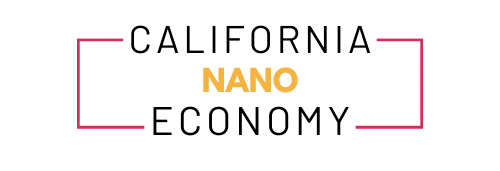How to effectively market eco-friendly and sustainable real estate properties to potential buyers?

Just a few years back, the term ‘green’ was associated primarily with the lushness of nature and the serenity it embodies. But today, the concept has mushroomed into something far-reaching and profound. It now pervades diverse sectors, including the real estate industry, where eco-friendliness and sustainability have become the new normal. As a real estate professional, you have the remarkable opportunity to contribute to this shift towards environmental sustainability and energy efficiency. However, effectively marketing these green properties requires a deep understanding of the trends, benefits, and features that attract eco-conscious buyers. This article provides you with robust strategies to market sustainable and energy-efficient homes effectively.
Understanding the Green Market
In the current global context, where climate change is a pressing concern, the real estate sector has seen a significant shift towards green and sustainable properties. Therefore, understanding this evolving ‘green’ market is crucial in strategizing your marketing efforts.
A lire également : What are the innovative approaches to ensuring affordability in new real estate housing projects?
The green market is no longer a niche or a luxury. It’s a necessity. As buyers become more educated about the environmental and financial benefits of energy-efficient homes, their demand for such properties is growing. These buyers are well-informed and seek detailed information about the sustainable features of the properties they consider. They are driven by a desire to reduce their carbon footprint, save on utility costs, and live healthier lives.
To effectively market to these buyers, it is crucial to understand their needs and motivations. They are likely to be attracted to properties with features such as solar panels, energy-efficient appliances, water-saving fixtures, and high-quality insulation. Moreover, they may prioritize homes located near public transportation or in walkable neighborhoods to reduce car dependency. You need to be well-versed with these eco-friendly features and be prepared to articulate their benefits comprehensively.
Lire également : What are the innovative solutions to parking challenges in urban real estate developments?
Highlighting the Benefits of Eco-Friendly Homes
Sustainable homes hold a myriad of benefits, both for the environment and homeowners. These benefits are potent marketing tools when communicating with potential buyers.
The most obvious advantage of energy-efficient homes is the significant reduction in energy costs. Features like LED lighting, Energy Star appliances, and solar panels can drastically reduce electricity bills. Moreover, many jurisdictions offer tax incentives or rebates for homes with green features, adding to the financial benefits.
Environmentally-friendly homes are not just about energy efficiency. They also offer improved indoor air quality due to non-toxic building materials and advanced ventilation systems. This can lead to healthier living and reduced medical expenses, a benefit particularly attractive to families.
Further, sustainable homes contribute to mitigating climate change by reducing carbon emissions. This environmental benefit is a strong selling point for buyers who are concerned about their ecological footprint.
Emphasizing the Trends in Green Real Estate
In real estate, as with many other sectors, understanding and leveraging current trends is key to effective marketing.
One of the prevailing trends is the increasing incorporation of smart home technology in eco-homes. Smart thermostats, lighting, and security systems not only offer convenience and safety but also contribute to energy efficiency. Highlighting these aspects can certainly win the favor of tech-savvy, eco-conscious buyers.
Another trend is the use of sustainable building materials in construction. From reclaimed wood to recycled metal, these materials reduce the environmental impact of the building process. They also add a unique aesthetic appeal to the property, which can be an attractive feature for buyers.
Showcasing Sustainable Features of the Property
The art of selling lies in the ability to visualize the unseen. When marketing green properties, showcasing the sustainable features in a tangible and visible way is key.
Use high-quality images and videos to highlight these features. For instance, show the placement of solar panels on the roof, the LED lighting fixtures, or the Energy Star-rated appliances in the kitchen. Use virtual reality (VR) or 3D tours to take potential buyers on a walk through the energy-efficient heating system or the rainwater harvesting system.
Include green certifications in your marketing materials. These certifications, whether it’s LEED, Energy Star, or National Green Building Standard, provide an authoritative endorsement of the property’s green credentials. They serve as a testament to the authenticity of the property’s sustainable and energy-efficient features.
Tailoring Marketing Strategies for Eco-Conscious Buyers
To market effectively to eco-conscious buyers, your marketing strategy should be tailored to their specific needs and preferences.
Use online platforms to reach out to this tech-savvy demographic. Highlight the eco-friendly features and their benefits on your website, social media channels, and email campaigns. Produce informative content such as blog posts, videos, and infographics about green living, energy savings, and environmental stewardship.
In your communication, use language that resonates with eco-conscious buyers. Words like ‘sustainable’, ‘energy-efficient’, ‘eco-friendly’, ‘renewable’, ‘carbon-neutral’, and ‘green’ can be powerful triggers.
Lastly, it’s important to showcase your own commitment to sustainability. Show that you are not just selling green homes but also practicing green living. This could mean having an eco-friendly office, driving an electric car, or supporting environmental causes. This authenticity can go a long way in building trust and credibility with your potential buyers.
Utilizing Digital Marketing Tools to Reach Potential Buyers
In this digital age, harnessing the power of digital marketing tools is integral to reaching potential buyers interested in eco-friendly homes.
The first point of contact with potential buyers often happens online. Therefore, your website should be a comprehensive source of information about the green properties you are marketing. Highlight the energy-efficient features, cost savings, and environmental benefits of these properties. Utilize SEO strategies to increase your online visibility and reach a larger audience.
Social media platforms like Facebook, Instagram, LinkedIn, and Pinterest can be used to share engaging content about your green properties. You can post high-quality images and videos showcasing the sustainable features, share testimonials from satisfied homeowners, run targeted ad campaigns, and engage with your audience through interactive content like quizzes and polls.
Email marketing is another powerful tool. You can send out newsletters showcasing your latest eco-friendly listings, share informative articles about green living, or provide updates on the latest in green building technology.
Additionally, consider leveraging influencer marketing. Collaborating with influencers who focus on sustainability and green living can help you reach a wider and more relevant audience. They can share their experience of touring your green properties or discuss the benefits of energy efficiency, helping to build trust and credibility among their followers.
Crafting a Long-Term Sustainable Real Estate Marketing Plan
To ensure the success of your real estate marketing efforts, it’s crucial to develop a long-term plan. The plan should align with the evolving trends in the green market, your business goals, and the needs of your potential buyers.
Include a mix of marketing strategies in your plan. Digital marketing tools like SEO, social media, and email marketing should be complemented by traditional formats like print ads, direct mail, and events. Also, stay updated with the latest marketing trends to ensure your strategies remain relevant and effective.
Building relationships with your potential buyers is vital. Regularly communicate with them through newsletters, social media interactions, or personal emails. Provide them with valuable information that not only promotes your properties but also educates them about sustainable living.
Finally, remember to assess and adjust your marketing plan regularly. Use analytics tools to track the success of your marketing campaigns. Understand what worked and what didn’t, and make necessary changes to your strategies.
Conclusion: The Green Future of Real Estate Marketing
The shift towards eco-friendliness and sustainability is a defining trend in the real estate industry. This has ushered in a new era of real estate marketing, where highlighting the energy-efficient features, cost savings, and environmental benefits of green homes is paramount.
The future of real estate marketing lies in understanding and meeting the needs of eco-conscious buyers. By leveraging digital marketing tools, tailoring your strategies to these buyers, showcasing the sustainable features of your properties, and crafting a long-term marketing plan, you can effectively market your eco-friendly and sustainable real estate properties.
As we continue to combat climate change and strive for a greener future, the demand for sustainable homes is only going to grow. Estate agents who can effectively market these properties will be at the forefront of this green revolution. Embrace this opportunity to contribute to environmental sustainability while growing your business. Remember, the key to success lies in your commitment to promoting a sustainable lifestyle and reducing the carbon footprint, one property at a time.
